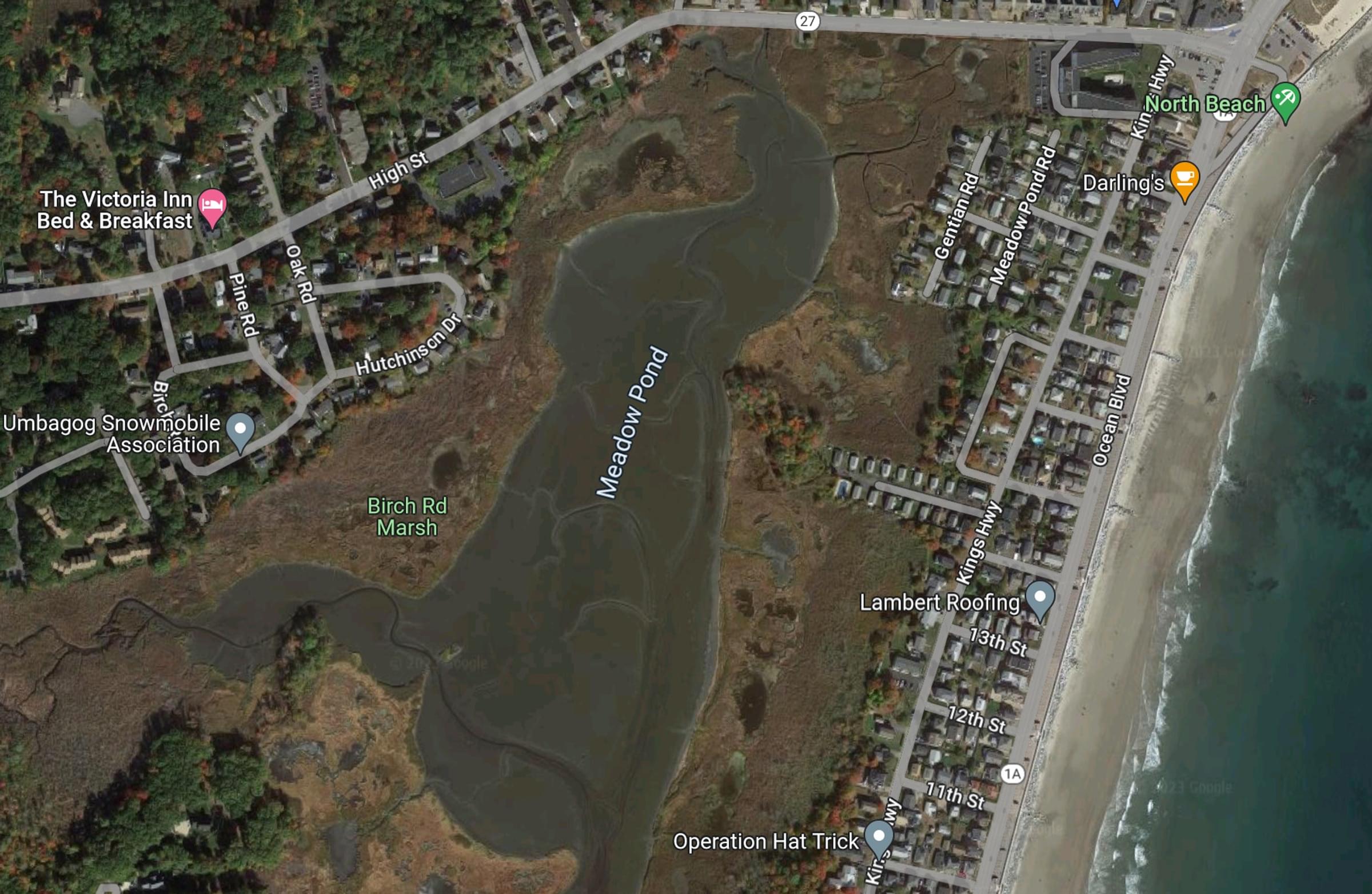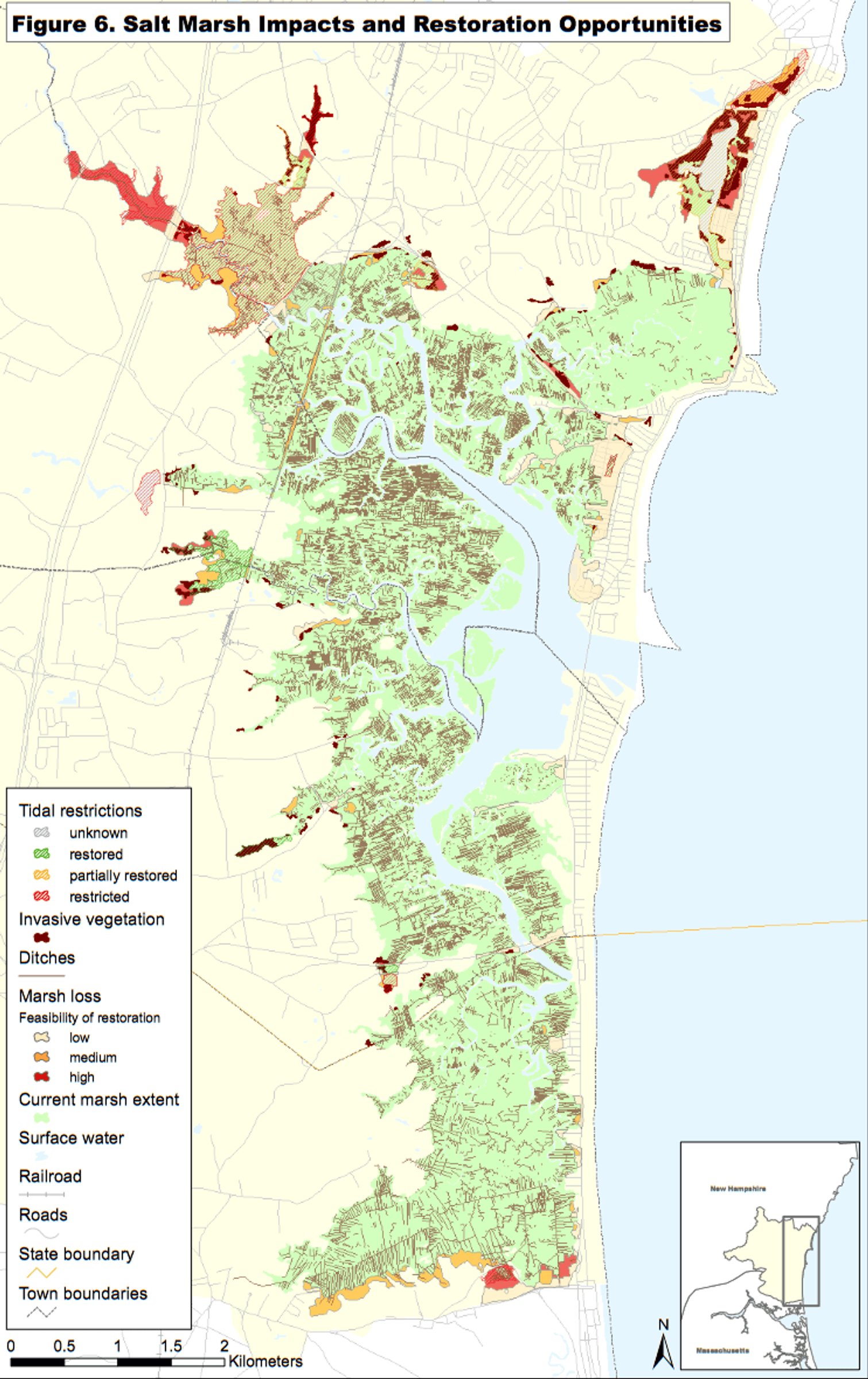Meadow Pond, Hampton

Meadow Pond, Hampton
Hampton, New Hampshire 03842
Hampton-Seabrook Marsh (New Hampshire Audubon) webpageHampton-Seabrook Estuary Restoration Compendium booklet
Bird Conservation in the Hamton-Seabrook Estuary pamphlet
Tips for Birding
From Birdwatching in New Hampshire , p. 96.
About this Location
This area runs from the upland boundaries behind High Street and Gentian Road to the edge of Meadow Pond Estuary. It is a large, 7-acre stand of common reed (Phragmites australis). It is the northern extremity of the largest marsh complex in New Hampshire: the Hampton Seabrook Marsh. The marsh is located landward of a highly developed barrier beach system and obtains tidal flow through a small inlet as its southern terminus. Up until 1995, this inlet was woefully inadequate to support full tidal exchange and was designated by the USDA as severely restricted. The marsh and lagoon system was dominated by cattail and Phragmites. In 1995, a new bridge was constructed as large as possible to alleviate the tidal restriction and restore health to the marsh. Small areas of Phragmites have been killed and displaced by native vegetation at the southern end of the marsh, near the inlet at Eel Creek. However, the majority of the system remains dominated by Phragmites.
About Hampton-Seabrook Marsh
See all hotspots at Hampton-Seabrook Marsh
At 5,000 acres, the Hampton-Seabrook Estuary contains the largest amount of salt marsh in the state. These marshes, along with their associated tidal flats, provide critical habitat for breeding and migratory birds, particularly shorebirds and salt marsh sparrows. Between 2006 and 2007, NH Audubon undertook a comprehensive avian assessment of this estuary, with the goal of obtaining information on the distribution of breeding birds and seasonal patterns of use by migrating shorebirds. The results were published in “Avian Use of the Hampton-Seabrook Estuary” and documented the estuary’s importance to these two groups of birds.
Following this study, New Hampshire Audubon also produced a brochure that summarized the findings of this study and presented conservation priorities for the estuary. This brochure has been made available to stakeholder groups in the region, including Conservation Commissions, recreation facilities, and interested individuals.
Moving forward, the conservation of salt marsh birds is a clear priority in light of potential sea level rise induced by climate change. New Hampshire Audubon is working with partners at the University of New Hampshire and the University of Maine to conduct surveys for sparrows and other breeding birds as part of a larger regional project. Data from our 2006-07 project will shortly be incorporated into a scientific paper on the effects of salt marsh ditching.
Features
Restrooms on site
Wheelchair accessible trail
Entrance fee
Content from Hampton-Seabrook Marsh (New Hampshire Audubon) webpage
Last updated October 22, 2023
